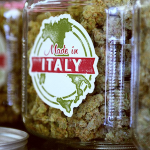By Sheshata
12 February 2016
In 2012, we published an article on the need for a fairer hashish market, as the current system means that producers are paid just €80-€200 per kilogram, while the consumer may pay as much as €16,000. Now, we take an in-depth look at the obstacles preventing a better system, and how we can create one in future!
How the existing hashish market is set up
Where does the money go? It seems that this depends a great deal on the market. In Afghanistan, things are particularly harsh for many farmers, and it is there that reports of farmers being paid as little as €80-€200 per kilogram originate.
In Morocco, on the other hand, the price for a kilogram of hashish can be far higher. Many of the more savvy producers now charge as much as €1500 per kilogram, often for high-grade hashish made from modern commercial varieties introduced from the Netherlands and Spain.
Proximity to the European market plays a great role here, as Morocco is a short boat ride from southern Spain. In comparison, Afghanistan is almost 5,000 km from Europe, and the cost of getting the product to the end market is therefore much higher.
Obviously Morocco and Afghanistan aren’t the world’s only hashish-producing countries, but together they make up the vast majority of global supply, so comparing the two countries is useful when trying to get an overall view of how things work on a global scale.
Why is a fairer system needed?
It is primarily the large-scale Moroccan farmers that can afford to set up grows capable of these modern forms of cultivation, while the majority of traditional Moroccan farmers still receive low remuneration for their products, and live in poverty with limited rights and prospects.
Afghani hashish is typically seen as being of lesser quality than Moroccan, and thus it generally commands lower prices all the way along the supply chain from retailer to producer. In general, Moroccan hashish direct from the supplier ranges from €250 to €1500 in price per kilogram, while Afghan hash, as stated, costs approximately €80 to €200.
A kilogram of Afghani hashish at maximum wholesale value ranges from €750 to €2500 in Amsterdam, while a kilogram of Moroccan hashish ranges from something closer to €1000 for lower qualities and up to €6000 for the highest grades. And in the coffeeshops, at retail prices, Afghan ranges from €2.50 to around €10 per gram, while Moroccan fetches something more like €4 to €16 per gram.
Afghan average salaries are also generally considerably lower than Moroccan. In Afghanistan, the median annual salary is approximately €8000 per year, while in Morocco the figure is closer to €20,000. These factors must be kept in mind when considering what constitutes a fair or unfair salary in each country.
However, the vast majority of the profits generated in both markets are nonetheless claimed by the criminal organizations that transport the hashish to Europe. Thus, there is certainly a case for amending international law, regulating the market and enforcing fairer business practices among exporters and importers.
Is there any such thing as fair-trade hashish right now?
In a word, no. For something to be Fair Trade in the legal sense of the word, it has to be certified and approved by The Fairtrade Foundation and its certification body, FLO-CERT. Obviously, this cannot happen with a product that is illegal under international law, and which cannot be exported or imported.
On the black market, hashish producers are paid poorly compared to the profits that can be generated by the middlemen, wholesalers, and retailers. However, there are one or two reports of something that could almost be termed “Fair Trade” occurring on the illicit market.
in 2015, VICE reported on a group of vendors on the deep web illicit marketplace The Silk Road, known as The Scurvy Crew, had set up exclusivity agreements with farmers that included a “sign-on bonus” intended to allow them to improve living conditions for themselves and their families. The crew’s ringleader Ace mentioned that many farms were “completely derelict”; in one instance, the crew paid for medical treatment for a farmer’s wife, as well as renovating his farm.
Can we create a Fair Trade system for hashish?
While international trade in cannabis and hashish remains illegal, it is impossible to establish a true Fair Trade system to ensure improved distribution of profits. However, we may well see more relationships like those established by The Scurvy Crew, as there are great benefits to be derived for both producer and buyer in such systems. The VICE article notes, for example, that the crew’s ethics led to a “great working relationship” with producers, ensuring a steady flow of premium-quality hashish to their customers.
On the other hand, it is important to consider the fact that if cannabis was to become truly legal, the price it would command on the open market would be likely to decrease substantially over time, until it compared to other legal cash crops such as grapes (a good comparison, as grapes are also used to make a highly-taxed product that causes intoxication, and thus command a high price per hectare compared to other legal crops). Per hectare, illegal crops are more valuable by far than legal crops, precisely due to the fact that they are illegal, and therefore incur much higher risks than any legal venture entails.
Just for comparison: currently, cannabis currently yields $47,660,000 per km² (and as such, is the world’s most lucrative crop by a significant margin), while grapes yield a far tinier sum of $625,000 per km². If cannabis were to drop to such comparatively low values per km², even the fairest Fair Trade system in existence may not be comparable to the revenues earned while it remains illegal.
In coming years, the cannabis market is set to undergo dramatic changes as the world opens up to the possibilities of legalization and regulation. At this stage, it is vital that structures are put in place to ensure that the developing world is given an equal chance to participate in the industry, not just for the potential to make money, but also for the possibility to ameliorate public health and living conditions by making hemp and medical cannabis accessible once more.



 Creative Commons Attribution
Creative Commons Attribution